Last week, Mathieu Boniol, Ph.D. and colleagues drove another stake into the heart of the UV (ultraviolet) tanning bed industry. In their latest meta-analysis, they reported a 20 percent increased risk of cutaneous (skin-based) melanoma in Western Europeans with any personal history of indoor artificial UV indoor tanning.
What is it going to take to put an end to this risky form of cosmetic tanning?
Let's take a brief look into the most influential sectors of this issue (health care, pop culture, and government) to get a better sense on where we stand with regard to eradicating this high-risk practice.
Mole Check
Melanoma is a malignant tumor of the skin's melanocytes, or pigment-producing cells. Although risk factors for developing melanoma include genetic predispositions (know your family history!), other preventable environmental factors such as dose-dependent solar and non-solar forms of UV radiation exposure have been consistently linked to this cancer in a plethora of peer-reviewed studies. (See here, here and here.)
Despite melanoma being the most deadly form of skin cancer and one of the top 10 most common cancers in North America, it is also one of the most preventable and, if caught early, curable types. Thus, regularly-scheduled mole exams combined with UV safety education for high-risk patients (fair skin, blue eyes, etc.) have been implemented as a standard of care in many outpatient practices. Among the many tips on UV safety, most if not all dermatologists and primary care physicians advise their patients to avoid the cosmetic use of UV indoor tanning.
Will preventive medical care alone eradicate this dangerous practice of cosmetic UV indoor tanning? Likely not.
While such practice is certainly necessary and beneficial, pushing an intervention that requires outpatient appointments on a young demographic that rarely visits their primary care physician is not an effective comprehensive solution to the problem.
Tan or Bust
It is pointless to take up word-space in order to convince you of the intense standards of physical beauty that society places on our younger population. Just take a gander at your local store's magazine rack; you'll undoubtedly find that most if not all of these role models are young, thin, and yes, tan.
So it is not surprising that, according to a 2010 CDC report on tanning, the population most likely to use indoor tanning salons were young, white women between the ages of 18-25 years. Of note, more than 50 percent of the women participating in this survey used indoor tanning salons more than 10 times over the year prior to the study's publication.
The concern with this demographic of indoor tanners is that their fair skin (compared to other skin tones), increased amount of lifetime UV exposure, and young age at which they are first exposed to high doses of UV radiation puts them at a higher risk for skin cancer than the general population.
Fortunately, there are some initial efforts made by pop culture movements seeking to deflate the craze of UV indoor tanning. In 2006, Cosmopolitan began its Practice Safe Sun (PSS) campaign with the goal to "alert women to the connection between unprotected UV exposure and skin cancer." Since then, this pop-culture and beauty magazine has published several articles concerning the dangers of indoor tanning.
Around the same time that Cosmopolitan's PSS campaign was conceived, American fashion designer Marc Jacobs began his own effort in raising funds for melanoma research and anti-tanning public awareness in a movement entitled Protect The Skin You're In.
Other than these few examples, my online hunt for anti-indoor tanning campaigns fell short when it came to mainstream cultural support. Although expected, it's regrettable to discover such apathy when it comes to this issue.
Big Brother to the Rescue?
Over the past several years, federal and state legislation have been slow and steady in putting the vice-grip squeeze on the tanning salon industry. On a national level, the "Tanning Tax" provision of the Affordable Care Act essentially categorizes indoor tanning in the same class as other high-risk taxable habits such as cigarette smoking and gambling. However, I am hesitant to believe that the presumed few-dollar hike in price per tanning session will do much to in preventing our young, impressionable citizens from using UV indoor tanning salons.
With regard to state legislation, much has been done to protect minors from the dangers of UV indoor tanning. Although California is currently the only state that bans UV indoor tanning for all minors under 18, more than half all U.S. states have at least some regulation in place, with many more in the process (see here for an updated list of proposed state measures). Despite this headway, little has been done to protect adults from these same dangers.
Take-Home Point
Although Boniol's latest research adds to the extensive amount of data linking UV indoor tanning to fatal skin cancers such as melanoma, it is going to take much more than scientific evidence to put an end to the preventable deaths of countless individuals.
Only a collective front of preventive medicine, cultural support, and increased governmental intervention will put a definite stop to this high-risk practice.
And so the grim question remains: How much loss of life will it take to make this happen?
For more by Brian Secemsky, M.D., click here.
For more healthy living health news, click here.
